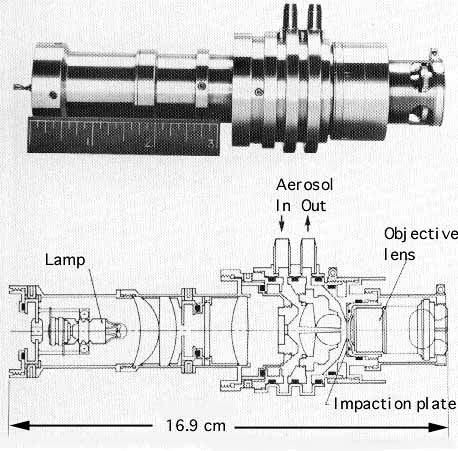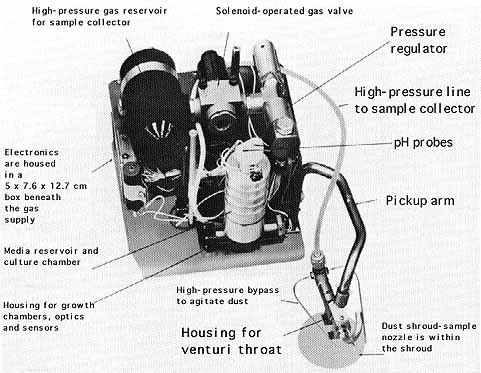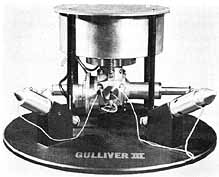















|
[61] On Mars, surface temperatures overlapped the range on Earth. At some latitudes, daily highs of +30°C had been measured, and ranges of 100° within a 4-hour period were not unknown. 27




|
| ||||||
|
| ||||||
|
| ||||||
|
|
|
|
|
|
|
|
|
|
| |||||
|
Vadicon microscope |
Data rate requirements demand power available only with much larger boosters. Development of sample handling, methods for discrimination of biologicals requires more work. |
|
|
10 |
Not defined |
Yes |
|
Wolf trap |
1.1-2.3 |
2460 - 3280 |
0.25/1 |
10-hr minimum |
Yes | |
|
Multivator |
|
1.4 |
1558 |
0.5/3-5 |
Days-week |
Yes |
|
Minivator |
Science input lacking; accommodation similar to Multivator. |
2.3 |
Not defined |
1-2/5-10 |
2 weeks |
Yes |
|
Gulliver |
- |
3.2 - 5.4 |
4920 - 9840 |
2-3/4-5 |
Not defined |
Yes |
|
Optical rotation |
- |
2.4 |
2132 |
0.5/1.1 |
Not defined |
Yes |
|
"J" band |
Sample acquisition and handlin,g development not begun. |
Not defined |
Not defined |
2-3/10 |
Weeks |
Yes |
|
Gas chromatograph |
- |
3.04 |
3280 |
?/14.5 |
Not defined |
Yes |
|
Mass spectrometer |
|
- |
- |
- |
- |
- |